Chapter: Civil : Railway Airport Harbour Engineering : Railway Engineering : Rail Joints and Welding of Rails
Types of Rail Joints
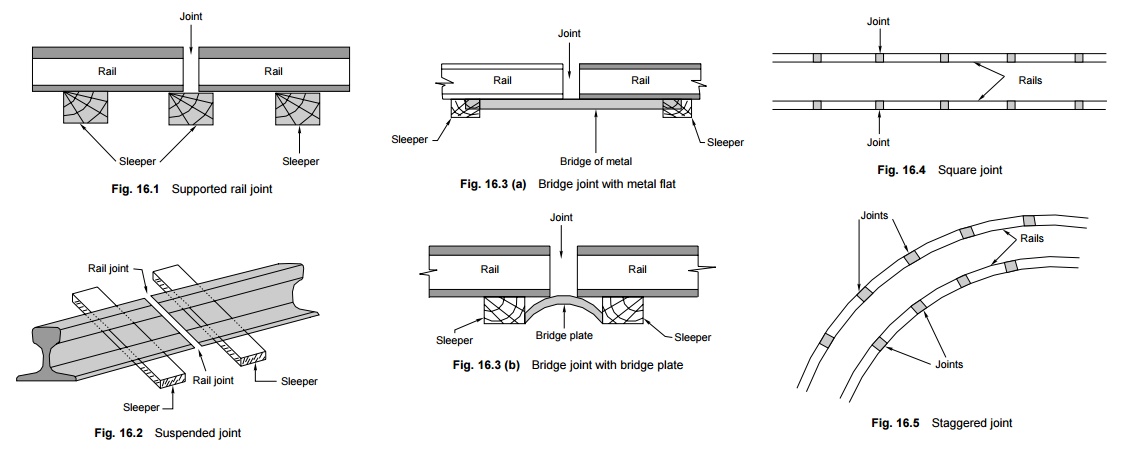
Types of Rail Joints
The nomenclature of rail joints
depends upon the position of the sleepers or the joints.
1
Classification According to Position of Sleepers
Three types of rail joints, come under this category.
Supported
joint In this type of joint, the ends of the rails are supported
directly on the sleeper. It was expected that supporting the joint would
reduce the wear and tear of the rails, as there would be no cantilever action.
In practice, however, the support tends to slightly raise the height of the
rail ends. As such, the run on a supported joint is normally hard. There is
also wear and tear of the sleeper supporting the joint and its maintenance
presents quite a problem. The duplex sleeper is an example of a supported joint
(Fig. 16.1).

Suspended
joint In this type of joint, the ends of the rails are suspended
between two sleepers and some portion of the rail is cantilevered at the
joint. As a result of cantilever action, the packing under the sleepers of the
joint becomes loose particularly due to the hammering action of the moving
train loads. Suspended joints are the most common type of joints adopted on
railway systems worldwide, including India (Fig. 16.2).
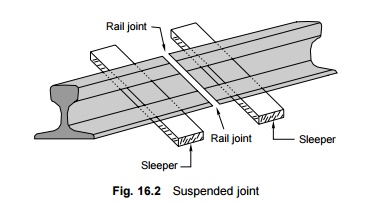
Bridge
joints The bridge joint is similar to the suspended joint except that
the two sleepers on either side of a bridge joint are connected by means
of a metal flat [Fig. 16.3(a)] or a corrugated plate known as a bridge plate
[Fig. 16.3(b)]. This type of joint is generally not used on Indian Railways.
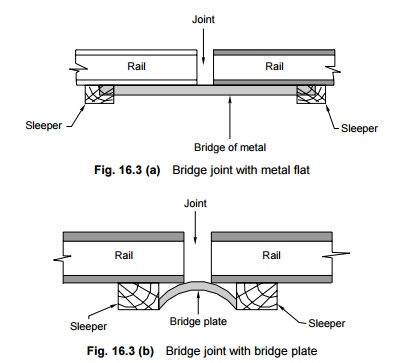
2 Classification Based on the Position of
the Joint
Two types of rail joints fall in this category.
Square
joint In this case, the joints in one rail are exactly opposite to
the joints in the other rail. This type of joint is most common on
Indian Railways (Fig. 16.4).
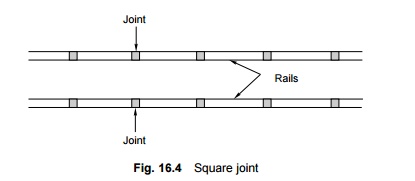
Staggered
joint In this case, the joints in one rail are somewhat staggered
and are not opposite the joints in the other rail. Staggered joints are
normally preferred on curved tracks because they hinder the centrifugal force
that pushes the track outward (Fig. 16.5).
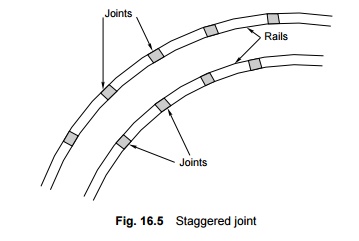
Related Topics